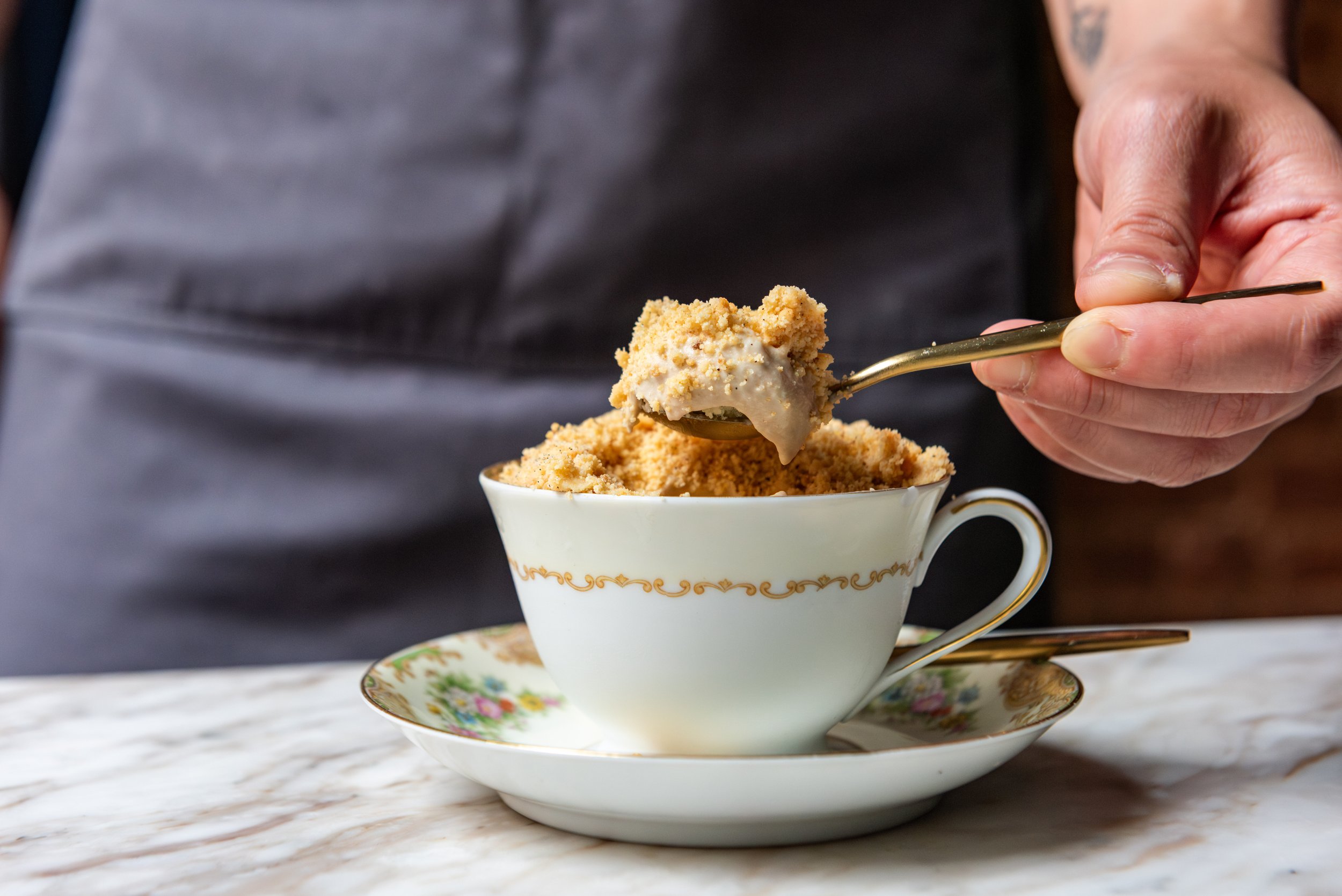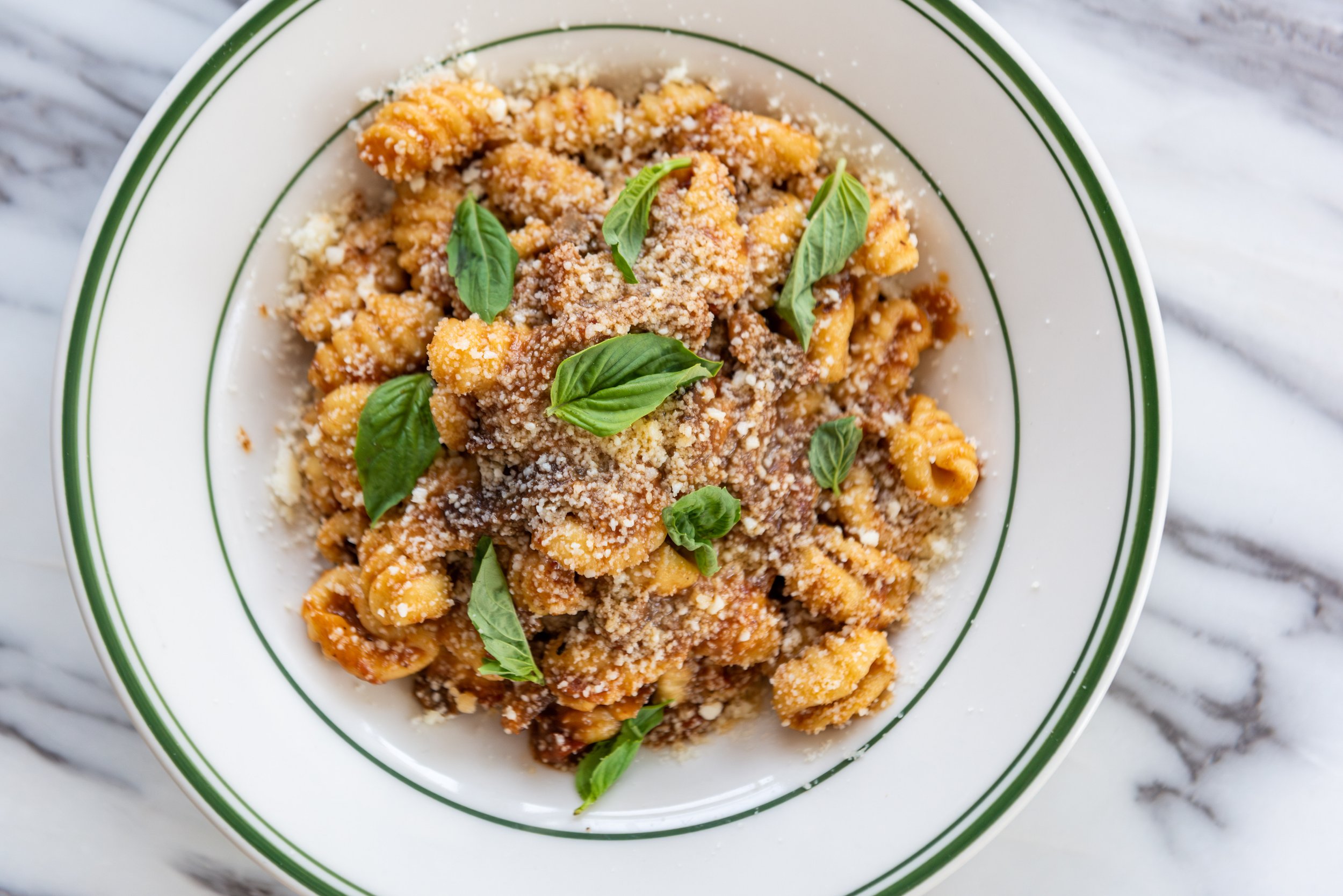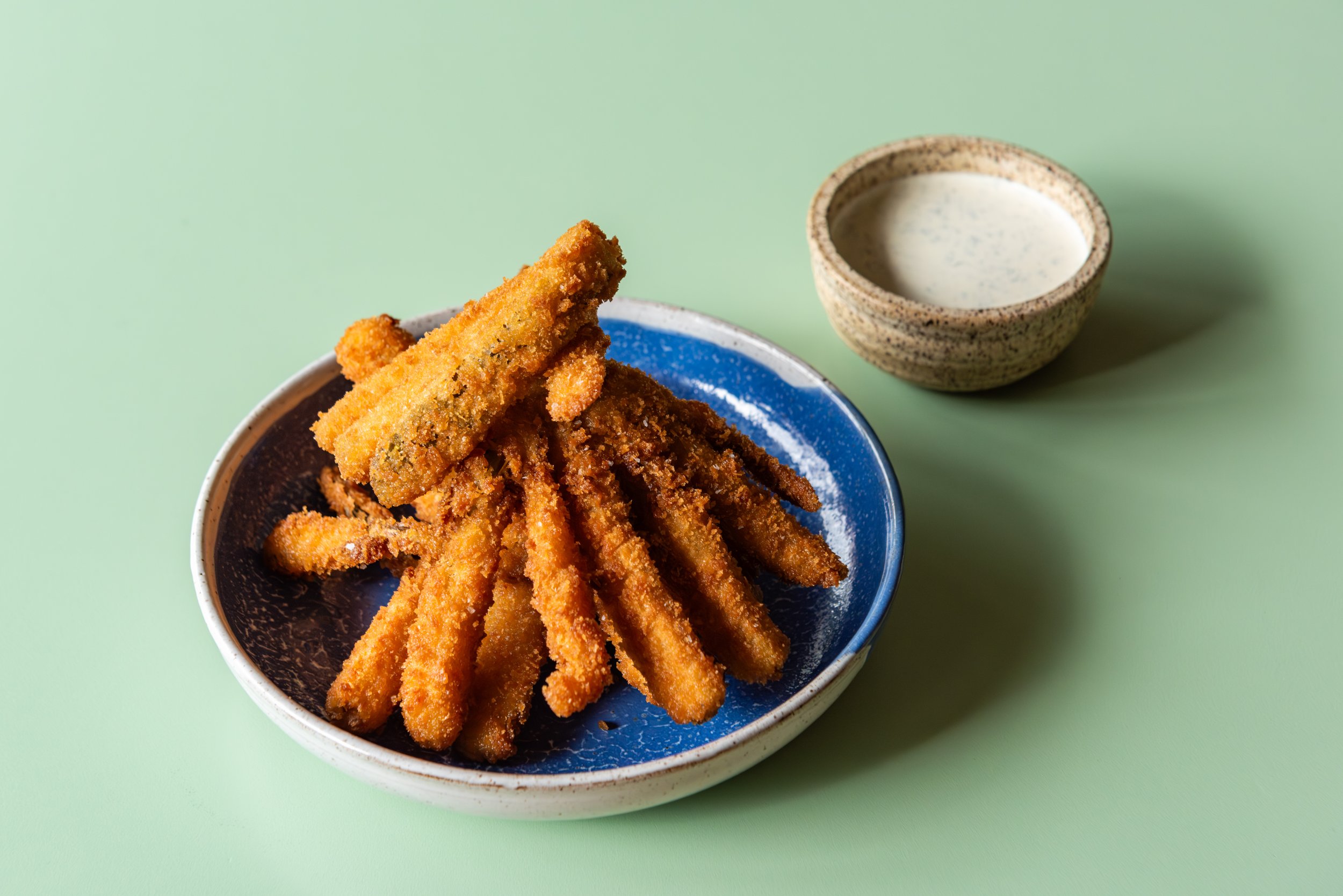2024 Boston Kitchen Notebook
An in-depth look at some of our favorite dishes and cocktails from our time on the ground in the greater Boston area
Parsnip Custard
“I was watching my son eat cereal, and he was putting all kinds of shit in there,” says Chef-Owner Shi Mei. “Berries and stuff. So this was inspired by that—something creamy, something crunchy, something bright, something savory.” For what would become the second of five courses on the winter tasting menu at Lenox Sophia, Mei constructed a silky parsnip custard topped with an array of garnishes to provide contrasting flavors and textures, “almost like a parfait.” He builds the custard base “like soubise,” cooking onion, parsnip, and cauliflower low and slow in butter before adding white wine, milk, buttermilk, a parmesan rind, and bay leaf. Once reduced and aromatic, he purées the concentrated cream, seasons it with nutmeg, and sets the custard in serving bowls with gelatin. When picked up during service, the chilled custard gets its crunchy counterparts— crisp puffed rice and fried parsnip chips—along with a ribbon of raw Granny Smith apple “for some brightness.” Mei also adds a spoonful of onion jam for sticky, sweet, and savory depth, and balances the dish with a dash of calamansi juice. The “grown-up cereal” is a delicate yet rich bite, refreshingly cold while full of umami, pops of acid, and playful textures.
Coco Chanel
At Brookline’s former Ivory Pearl, where raw bar-inspired small plates, tinned fish, and caviar service defined the menu, Beverage Director James Preciado Sutter was tasked with constructing cocktails to complement the seafood and contemporary wine bar atmosphere. A trip to London’s Coupette inspired the Coco Chanel: a sparkling cocktail that’s like “if a Piña Colada was forced to be Champagne. [At Coupette] they get coconut sorbet and pour Champagne and rum over it,” says Sutter. His take utilized a private barrel of Bacardi Sherry cask rum, which Sutter decided to combine with coconut and pineapple. To maximize the tropical flavor, he fermented it with koji. “We used to ferment the coconut meat in an incubation chamber appropriate for growing its own koji, however, we found that using shio koji provided a savory depth of flavor without the hassle of controlling temperature and humidity.” After letting the shio koji-coconut sit for 24 hours, Sutter combined it with the rum and pineapple juice, and added a touch of macadamia nut liqueur. In pursuit of the creamy texture found in “yeastier” Champagne, he decided to wash the batch with whole milk, and blend in additional lactic and malic acids. Carbonated to-order, the sweet and savory highball comes together with a garnish of green olives. “We thought it fit the ethos of our bars perfectly,” says Sutter, “and it works well with the delicate food.”
Blackberry Trifle
For Pastry Chef Rachel Dykes, finding inspiration in winter citrus can prove to be a challenge, so when the weather turned warm, she welcomed berry season with open arms. Blackberries were at the top of her list. “I wanted to do a trifle, but wasn't sure how to do it in a restaurant setting.” Luckily for Dykes, Puritan & Company had just ordered small glass dessert cups—perfect for individual trifles. The first layer is a creamy blackberry mousse, packed full of lemon zest, blackberry purée, and Dykes’ secret weapon: a concentrated blackberry gel. “I love using gels. Blackberries have a really potent flavor, but when you mix it with something creamy, I feel like you lose it.” Next, she layers a drizzle of salted caramel for depth, followed by a warming, ginger-heavy coffee cake crumble. “I took the first bite, and it tasted like a summer pie!” Dykes tops the trifle with fresh blackberries and a scoop of vanilla custard, straight from her grandma’s recipe book. “My grandma cooked everything and anything she could come up with. I remember having this delicious vanilla ice cream as a kid, and I have all her recipes saved. It's the kind of ice cream that makes you feel good inside.” The textural, easily shareable dessert (“like a warm hug”) brings technique, nostalgia, and summertime warmth to the menu at Puritan & Company.
chopped not-liver
Growing up a picky eater, Chef Noah Clickstein had a revelation at his grandmother’s 60th birthday dinner when he ordered calves liver—in a momentary act of rebellion—and unexpectedly fell in love. Inspired by his own cravings and the religious and cultural significance of the dish, Clickstein knew he wanted to add chicken liver to the menu when he joined the team at Lehrhaus, the Jewish tavern and house of learning in Somerville. But, there was one catch: Lehrhaus is a kosher dairy restaurant. Unable to use the primary ingredient, Clickstein set out to make a vegetarian version of the dish, working through “10 to 12 iterations before finally nailing this recipe.” He roasts and steams Italian eggplants and soaks toasted cashews and walnuts overnight. Separately, he chars and caramelizes Spanish onions with local shiitake mushrooms before he flambés the mixture with apple brandy. Clickstein adds the nut mixture to a food processor and then, once it has a “nut butter consistency,” incorporates the meat of the eggplants and the mushroom-onion mixture along with salt and a pinch of crystallized MSG “for a bit of extra body and umami.” Topped with fried onions, mushroom oil, and parsley and served with a side of pita, the aptly named Chopped Not-Liver embodies the “Jewvelle” cuisine that Clickstein and Pastry Chef Alex Artinian are sharing with the Boston community.
Ham Hock Cavatappi
Traveling back to North Carolina isn’t just about visiting family for Chef Darrell Boles, it also means indulging in the Southern dishes he misses most. And when Boles was back home during the holidays, a New Year’s custom left him inspired. “We have a tradition down south that on New Year's Day you’re supposed to eat greens, black-eyed peas, and pork jowl for good luck.” So, when he returned to Boston, Boles wanted to bring the ritual to the menu at Little Donkey. He starts by smoking ham hocks for three to four hours before braising them with mirepoix, red wine, rosemary, thyme, and sage. Boles switches up the usual format, choosing pasta as the vehicle for the dish. “A family member of mine would make pasta for the holidays. We didn’t have pasta dishes on the menu at the time, and I wanted to intertwine what we have [at the restaurant] with my childhood.” Boles incorporates caraway into the dough to add some depth and rye flavor and whips up a spicy tomato sauce with Calabrian chiles for a kick of heat and acid. To finish, the hocks are chopped and mixed with braised mustard greens, coated in the rich, flavorful braising liquid, and tossed with the caraway cavatappi and spicy sauce. “[The dish] is warming and comforting. I always take inspiration from things that mean something to me. It reminds me of home.”
Fried Tofu Biscuit
Sensing there was a demand for a vegetarian alternative to Brassica Kitchen’s cherished fried chicken, Chef Griffin Paparatto saw an opportunity to put fried tofu on the menu. Paparatto sources his tofu from Twenty-First Century Foods based in Jamaica Plain. “The product they are making comes out the best,” says Paparatto, “they make it fresh for us the day before.” The tofu is pat dry and hand torn into irregular shapes “for good surface area” before it’s fried. Once the water is cooked out and the tofu is puffed up, Paparatto marinates the pieces in a pickle brine medley, using the leftover liquids from pickles and hot sauces, as well as the brine from pickled black pepper. He adds Frank’s RedHot and maple syrup before letting the tofu sit for about a week to soak up the flavor. Paparatto then uses the brine that hasn't been absorbed to “get the flour a little wet and sandy to give the tofu that cornflake texture on the final product.” After it’s dredged, the tofu is par fried and then fried once more on pick-up. The tofu is served over a buttermilk drop biscuit and luxuriously coated in a vegetarian cream-based gravy made with chiles, black pepper, vegetable stock, parmesan, and herbs. Now, the dish has gained a cult following in its own right. It’s “super noticeable when we don’t have it,” says Paparatto, “we don’t sell nearly as many biscuits” when the fried tofu isn't on the menu.











